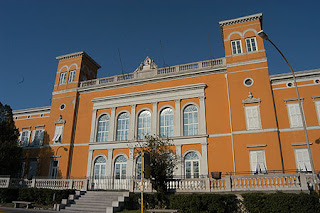
A lot has been said and written about CRM in the last ten years, but unfortunately CRM projects in the south-east Europe are still hard to see, and even those that are formally started are still in the phase of planning. Therefore, it is great pleasure to see a CRM project that has delivered on its promises, and is successfully implemented. One such project is implementation of Microsoft Dynamics CRM 4.0 in the IEDC - Bled School of Management, the project that was finished just recently. Since I graduated from the same school one week ago, I got good insight into the status of the project.
Main motivation for the introducing the sophisticated CRM system was rigidity and static orientation of the old CRM software. It's better to call old software Contact management software, since it was basically big database of contacts, with lot of fields added to contact card that had a purpose to describe different interactions between school and clients. For example, apart from MBA courses, school organizes a lot of seminars and other events. To track attendance of these different types of seminars, contact card of the participant had a special field in which was written in what seminars and classes a student has participated. Since it was not uncommon for one person to attend several types of programs, and each program has its own code, this field soon became an unintelligible string of characters. Of course, computer could still decipher this string, but it was hard to assemble meaningful reports and sensitivity to errors was high.
School felt a need for modern, process-oriented, CRM software. Since the old software was hard to change and initial idea to use the CRM functionality of existing Navision implementation didn't hold off, choice fell on the newest version of Microsoft Dynamics CRM family - CRM 4.0. The project, during which CRM was installed on server and 36 client computers, was 10 month long, out of it 4 months went on planning and remaining 6 months on the actual implementation. It's interesting to note that project was based more on the "insourcing" than on the "outsorcing", meaning that majority of tasks were done by internal staff rather than external consultants, who were used usually only for migration of data. Customizations were avoided as much as was possible, using advantage of the already existing CRM functionalities and processes.
But, although transition was successfully done and old software is now defunct, there is still a lot to do in the field of change management. Change in the software needs some time to be fully accepted by the people who use it, and this is especially true for the long-time users of the old program. Nevertheless, a lot of improvements have been seen, from faster executing of everyday tasks like printing labels, to better introspection of different ways of interactions with customers. Being myself a customer of this school, I hope that new software will help school to further develop and nourish relationship with its former, present and future students.



